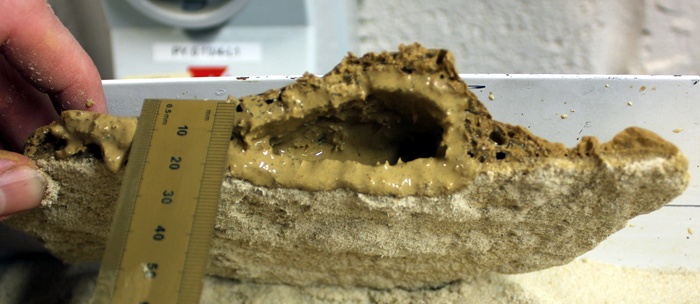One of the most striking features on Earth are the curious flows of lava as it cools, forming undulating ropes of rock known by the Hawaiian word pahoehoe. New research simulating conditions on Mars now reveals that the red planet has its own kind of pahoehoe…but made of mud.
By and large, Mars is cold and dead (and also very, very red), and has been for a few billion years. Long ago, it had a similar temperature and climate as the Earth, but as its core cooled, it lost its protective magnetic field shield, allowing the atmosphere to escape and the oceans to dry up, leaving behind the frozen wasteland we know today.
But that doesn’t mean that old Mars doesn’t have a few tricks left up its sleeve.
For years planetary scientists have been puzzled by many of the features on the Martian surface, especially wavy, undulating, rope-like ridges of terrain. And recently, a team of researchers at the Laboratory of Planetology and Geodynamics in France may have found an explanation.

In a recent paper accepted by Nature Geoscience, the scientists drew inspiration from lava flows on Earth. When hot lava reaches the surface, it comes in contact with the relatively cool air, causing it to harden into a crust. But new, hot lava bubbles up underneath, bending and warping the upper crust. Sometimes the upper crust even breaks, allowing new lava to seep out, repeating the process over and over again, leading to the formation of a pahoehoe.
To test this idea, the scientists involved in the study created a simulated Martian environment, with just the right pressures (130 times weaker than Earth’s atmospheric pressure) and temperatures (typically below zero) and let the Mars-style mud flow.
The result? Muddy pahoehoe, precisely what they suspected. Exactly how often these mud flows develop is still an open mystery, but Mars remains a dynamic, changing world, if a messy one.

